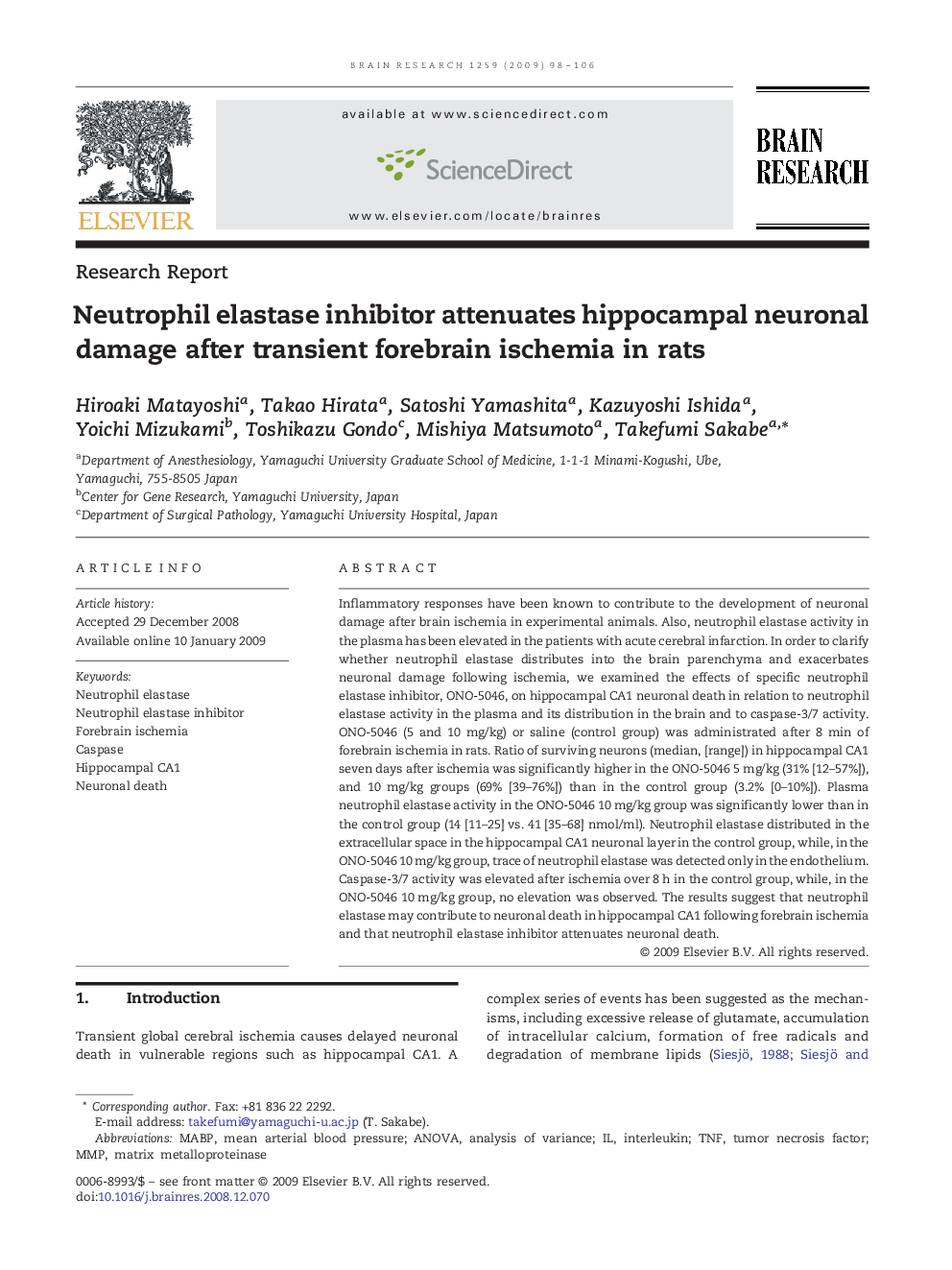| Article ID | Journal | Published Year | Pages | File Type |
|---|---|---|---|---|
| 4328554 | Brain Research | 2009 | 9 Pages |
Inflammatory responses have been known to contribute to the development of neuronal damage after brain ischemia in experimental animals. Also, neutrophil elastase activity in the plasma has been elevated in the patients with acute cerebral infarction. In order to clarify whether neutrophil elastase distributes into the brain parenchyma and exacerbates neuronal damage following ischemia, we examined the effects of specific neutrophil elastase inhibitor, ONO-5046, on hippocampal CA1 neuronal death in relation to neutrophil elastase activity in the plasma and its distribution in the brain and to caspase-3/7 activity. ONO-5046 (5 and 10 mg/kg) or saline (control group) was administrated after 8 min of forebrain ischemia in rats. Ratio of surviving neurons (median, [range]) in hippocampal CA1 seven days after ischemia was significantly higher in the ONO-5046 5 mg/kg (31% [12–57%]), and 10 mg/kg groups (69% [39–76%]) than in the control group (3.2% [0–10%]). Plasma neutrophil elastase activity in the ONO-5046 10 mg/kg group was significantly lower than in the control group (14 [11–25] vs. 41 [35–68] nmol/ml). Neutrophil elastase distributed in the extracellular space in the hippocampal CA1 neuronal layer in the control group, while, in the ONO-5046 10 mg/kg group, trace of neutrophil elastase was detected only in the endothelium. Caspase-3/7 activity was elevated after ischemia over 8 h in the control group, while, in the ONO-5046 10 mg/kg group, no elevation was observed. The results suggest that neutrophil elastase may contribute to neuronal death in hippocampal CA1 following forebrain ischemia and that neutrophil elastase inhibitor attenuates neuronal death.
